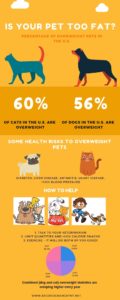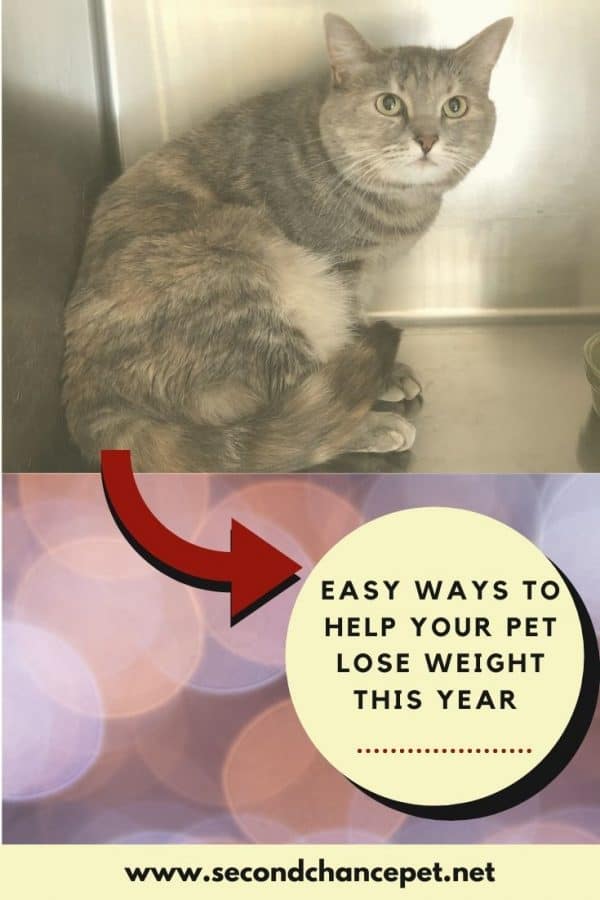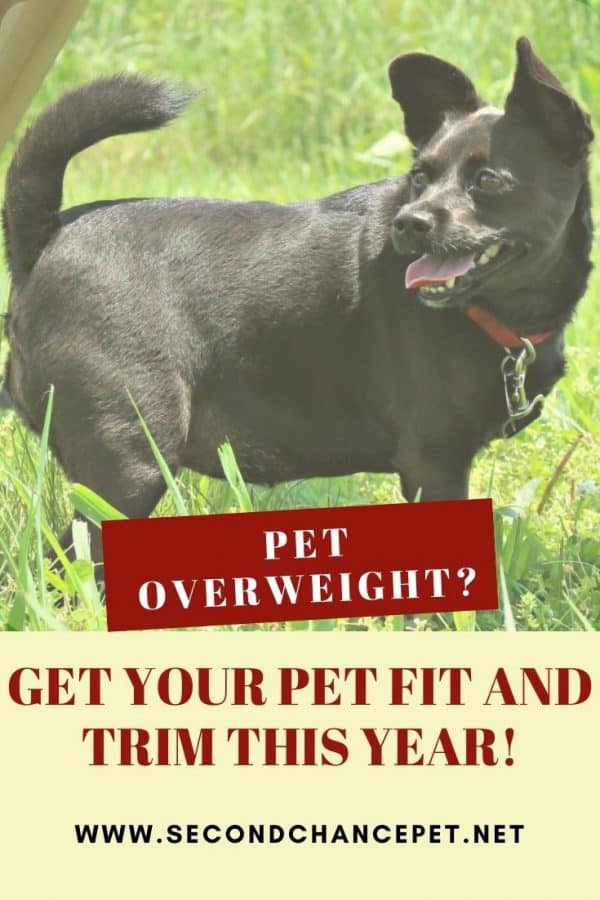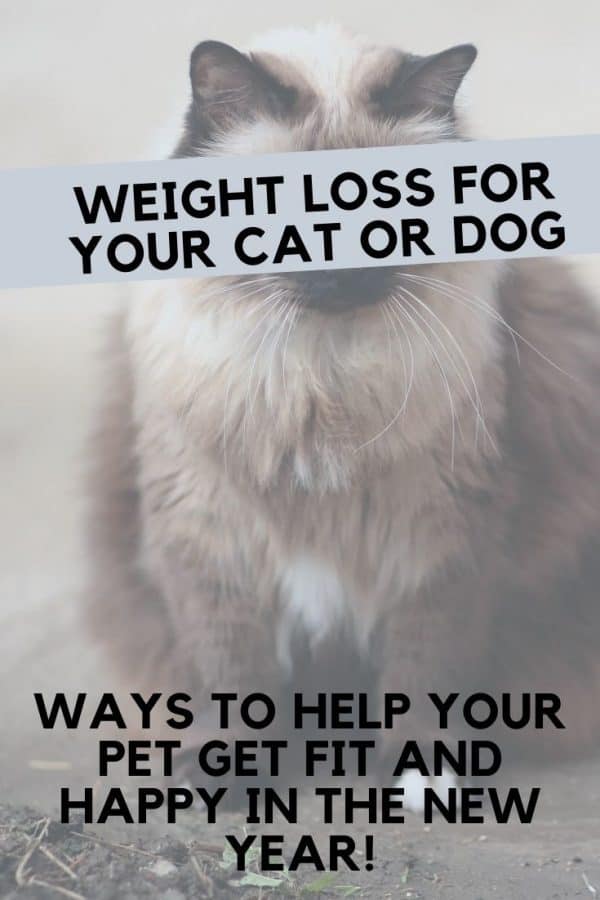 HELP YOUR PET LOSE WEIGHT
HELP YOUR PET LOSE WEIGHT
One of the most popular New Year’s resolutions is to lose weight. Along with the increasing incidence of obesity in humans, our pets are faring no better. Latest estimates by veterinarians are that 59% of all cats, and 54% of dogs can be classified as overweight. So, now, even in the realm of weight, our pets are looking more and more like us.
As there are for humans, there are many health consequences for overweight pets – diabetes, liver problems, arthritis, heart disease, and high blood pressure. Cats and dogs who exceed normal weight limits also have more trouble jumping, playing, and breathing, than their svelte compatriots. And, again like humans, their inactivity increases weight gain, and their weight gain increases inactivity.
Fortunately, there are things we, as concerned pet parents, can do to take pounds off, and add healthy years to, our furry friends.

CATS
- How much should my cat eat?
- Indoor cats should consume about 20 calories per pound daily. Therefore, a 10 pound cat should take in 200 calories for weight maintenance.
- Outdoor cats need more calories in order to deal with weather extremes, and other risks associated with life outdoors. They need about 35 calories per day per pound. So, a 10 pound outdoor cat will need about 350 calories to maintain their weight.
A great calorie calculator for felines can be found here: https://petsci.co.uk/feline-calorie-calculator/
How do I help my cat lose weight?
-
FOOD
- Say No to Free-Choice Feeding. Unless you have only one cat, and you are measuring the food carefully and not refilling the bowl when it’s gone, free feeding is an invitation to obesity. Food tastes good, and that is the only incentive many cats need to overeat.
- Feed more wet food and less dry.
Dry food is carb-heavy and does not provide the moisture your cat needs to feel satisfied.
- Read the labels of your cat food. Cats are carnivores and require very little in the way of carbohydrates. So high-protein foods are the way to go.
- Try to avoid treating your cat with food, and use a favorite toy or some cuddle time with you. If you must treat, use a little of their regular food, or a tasty small piece of dried liver or cooked chicken.
-
EXERCISE
- Cats are hunters, so whatever games you can devise that both gets your cat moving and mimics the hunt, will be an incentive for movement. Laser pointers, moving in an erratic manner as prey would do. Toss a ping pong ball in a dry bathtub and watch the fun.
- Buy or make a cat tree – the more challenging, the more labyrinthine, the better. Tuck surprise toys in the highest points – anything to encourage your cat to climb or jump. A bored cat (just like a bored human) is more likely to spend his time eating.
- Consider getting a second cat, if you don’t already have one. If your cat is naturally playful, a second, equally playful cat can encourage exercise and reduce boredom.

DOGS
- How much should my dog eat?
- Dogs generally need about 30 calories per pound per day to maintain their weight. Therefore, a 30 pound dog needs to consume about 900 calories per day; and an 80 pound dog should have 2,400 calories per day.
A great calorie calculator for dogs can be found here: https://www.dogfoodadvisor.com/dog-feeding-tips/dog-food-calculator/
How do I help my dog lose weight?
-
FOOD
- Read the label. A lot of dog foods contain carbohydrates. Dogs in good health need protein more than carbs, and good carbs, like those found in vegetables, should replace grain-based carbohydrates. If, however, your dog has health issues, please check with your veterinarian for the appropriate diet. Kidney issues, for example, require a much lower protein diet with higher carbs.
- Replace dry food with one or more of the following: cooked or raw carrots; salt-free green beans; canned pumpkin (no sugar added); broccoli (very small amounts since this may cause gas); apples, etc. If your dog has bad breath, try mixing some small pieces of asparagus in the food. Sweet potatoes, again cut into small pieces, are full of vitamins and can help boost immunity.
- Salt-free green beans are often recommended to fill up your pup without adding extra calories. When I adopted my big girl, Wilma, I already had another dog who was a bit on the chunky side. I had put her on the salt-free green beans by recommendation of the vet, and she was doing well on them. However, I mixed up the bowls one evening and gave Wilma the one with the green beans. When I returned to pick up her dish, I found that she had neatly removed all of the green beans, placed them in a circle around her food dish, and proceeded to eat the rest of the meal. So….green beans are fine for some dogs, but others will object!
-
EXERCISE
- A bored dog is often a dog who will eat too much. Movement is the key, and the key to movement is excitement. Take long walks (this will be good for you as well). If you have a hound, or other nose-oriented dog, this may not work as much exercise. Stopping every 8 seconds because of a fascinating smell is not particularly efficient when it comes to exercise but a little movement is certainly better than none.
- Is your dog a social butterfly? Does he love the company of other dogs? Then the local dog park is the place for him. If this is her first time at a dog park start slowly and be ready to step in quickly if things go badly. Leave after no more than 10 minutes, and gradually work your way up. If you’re not able to go to a dog park regularly, consider doggie day-care, even if for only one day a week. The good day-cares encourage (and supervise) playtime, and your dog will get some socialization with people who are not his family.
- Agility classes. If your dog is smart, and young, consider trying one of these. They can be pricey, but both you and your dog will learn something new, as well as become more active.
- Jogging. If you’re a jogger, by all means let your dog run with you. Start slowly – no more than a few minutes – to avoid injury. If your dog has any movement issues, or is older, check with your veterinarian to make sure she is in good enough health for this.
- If all this sounds too regimented and time-consuming, go back to the basics. Grab your dog, go in the backyard, and toss a ball or Frisbee. Playtime is best if he shares it with you!
HELP WITH YOUR NEW YEAR’S RESOLUTION
Did you know that dog owners are 34 percent more likely than non-pet owning participants to achieve a fitness goal of 150 minutes of weekly walking? AND….if you’re walking regularly, you’ve cut your risk of developing diabetes by a whopping 33%.
If you make achieving optimal weight for your pet a priority in 2019, you’ll be prolonging their lives, getting some exercise for yourself, and your pet will certainly enjoy the extra time and attention from you. Happy New Year!






